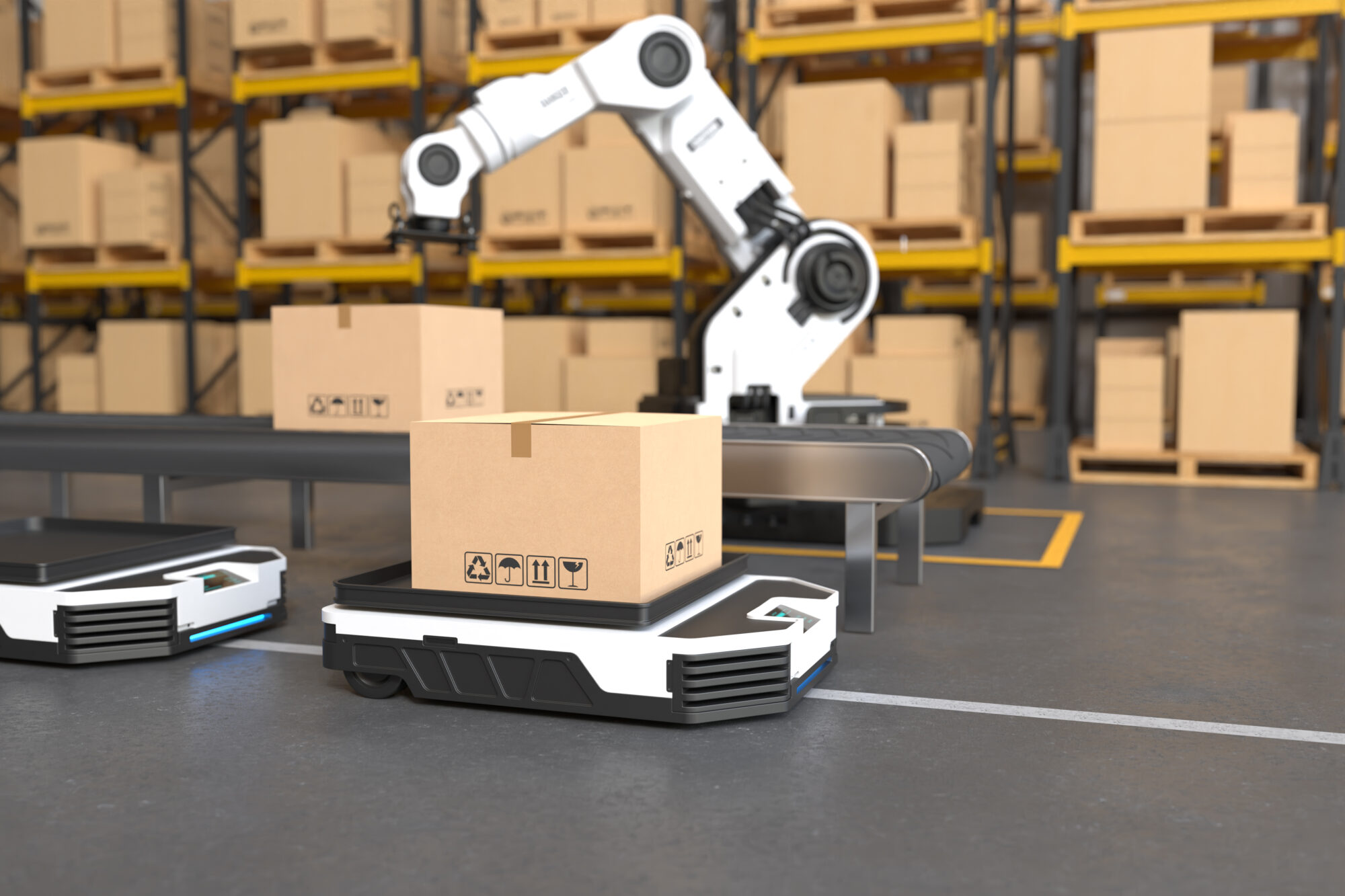The logistics industry has been sprinting toward automation for over a decade. Robotic pickers, AI-powered inventory systems, real-time tracking dashboards, all signs of a sector embracing the future. Yet despite all this progress, many warehouses still rely on the same decades-old physical infrastructure to move goods: outdated pallets, often made of wood, dented metal, or inconsistent hybrids.
It’s like installing self-driving software in a car with misaligned wheels. You can build all the intelligence you want on top, but if your base layer isn’t predictable and performance-ready, the system fails quietly and often.
This disconnect is becoming a serious blocker. Companies are learning that automation doesn’t just rely on code; it depends on consistency. And that includes the very platforms that goods sit on, get lifted from, and move across hundreds of times a day.
In 2025, logistics success isn’t just about what systems you install, it’s about what you’re building them on.
Warehouse leaders are finally asking the right question: Is our physical infrastructure automation-ready? And for many, that inquiry starts with something deceptively simple: the pallet.
Why Logistics Infrastructure Still Lags Behind the Tech Curve
In recent years, we’ve watched warehouse tech leap ahead, digital twins, predictive routing, edge AI. But while software races forward, the physical systems responsible for moving, stacking, and storing actual goods often lag far behind.
Pallets, containers, racks, these aren’t flashy investments. Which is exactly why they’re often ignored. But in practice, they determine how well your smart systems perform. No matter how advanced your robotics are, they still have to interact with the real world, and misaligned infrastructure leads to expensive, recurring friction.
When outdated hardware meets precision automation, things break. Literally.
The “Hidden Layer” Blocking Full Automation Adoption
Talk to any automation consultant and you’ll hear the same thing: the biggest delays in implementation aren’t software-related, they’re physical.
Inconsistent pallet sizing causes robotic arms to misfire. Damaged or uneven platforms create loading jams. Manual overrides increase, slowing down what should be fully hands-off operations.
But because these delays show up as “operational noise”, slow throughput, higher error rates, occasional equipment downtime, they’re often misattributed to the tech itself.
The truth? Subpar platforms are the bottleneck no one talks about. Fix the base layer, and automation gets a whole lot smoother.
Why Uniformity Is Automation’s Hidden Multiplier
Automation isn’t just about speed, it’s about repeatability.
Systems work best when everything behaves as expected. A standardized container, lifted the same way, moving through the same sensors, on the same-sized pallet, allows for tighter tolerances and faster cycles.
Plastic pallets offer that consistency. They’re molded to exact specs, resistant to warping, and compatible with automated loaders, conveyors, and high-speed sorting systems.
They’re not just stronger than wood, they’re smarter. Because in automation, reliability is performance.
Legacy Materials Are Sabotaging ROI
Still using wood or metal? Here’s the issue:
Wood splinters, absorbs moisture, and warps under load, none of which play nicely with robotics. Even minor deformities can send machines into error loops.
Metal, while durable, is heavy, loud, and often dents under stress. These dents throw off sensor readings and make automated stacking harder. Plus, you’re paying more for transport weight without gaining any automation upside.
Both materials were built for manual systems. Today’s warehouses need platforms that match the precision of modern fulfilment, and plastic delivers exactly that.
What Makes Automation-Compatible Pallets Different
It’s not just material, it’s design.
Automation-compatible plastic pallets are engineered for machine interaction. That means:
- Exact dimensions every time
- Smooth edges for safe sensor scanning
- Reinforced structures that hold up under automated handling
- Lightweight builds that reduce energy use in lifts and conveyors
They also integrate seamlessly into modular racking systems, AMR platforms, and even automated pick-and-pack zones, because they’re made for this world, not the last one.
This is why more operations are shifting to automation-compatible, strong plastic pallets as the default. When your base materials are predictable, every layer of your system performs better.
That consistency allows automated systems to calibrate once and stay calibrated. It reduces unplanned maintenance, lowers sensor misreads, and improves handoff timing between machines. Over time, these small gains compound into higher uptime, smoother shift transitions, and measurable increases in daily throughput.
Throughput, Flow, and Micro-Delays
Here’s something many warehouse planners still underestimate: automation doesn’t usually fail in big, dramatic ways, it fails in tiny increments. A slightly misaligned pallet. A rough edge that scrapes a conveyor. A sensor that triggers an unnecessary stop because of inconsistent load height.
Individually, these issues seem minor. But at scale, they create micro-delays that multiply across thousands of transactions per day. A two-second slowdown per load might not sound like much, until you’re running 30,000 picks per shift. That’s over 16 wasted hours a week, just from small inefficiencies hiding in plain sight.
The worst part? These delays often get dismissed as “part of the job” rather than symptoms of poor infrastructure alignment. Teams troubleshoot software, retrain staff, or recalibrate robotics, when the real culprit is sitting right there under the goods, the pallet that doesn’t behave predictably.
True flow depends on consistent input. If your platforms vary in size, weight, or response to movement, your automation is forced into constant adaptation mode, which defeats the purpose of installing it in the first place.
This is why high-throughput operations obsess over infrastructure standardization. It’s not just about uptime, it’s about predictability at speed.
What the Experts Say About Manufacturing Readiness
In its detailed PwC report on next-gen manufacturing, PwC highlights a major blind spot for companies trying to scale automation: the physical infrastructure hasn’t caught up to the digital ambition.
According to the report, manufacturers often leap into automation projects focused on software integration and data connectivity, while underestimating the limitations of their physical workflows, handling systems, and material interfaces. The result is a growing “readiness gap” between digital control and physical execution.
What PwC makes clear is this: you can’t digitize inconsistency. If your pallets, containers, or racks behave differently shift to shift, your automated systems will either slow down or fail entirely. Standardization isn’t a luxury, it’s the price of admission for high-efficiency, next-generation operations.
The report also warns that ignoring foundational upgrades leads to fragmented ecosystems. Automation becomes a patchwork of workarounds and manual interventions, defeating its core value proposition. True ROI requires physical systems that align with digital strategy from day one.
Forward-thinking operations are taking this seriously. They’re upgrading not just their software but overlooked elements like base platforms, conveyor specs, and mobile units. When the physical layer works seamlessly, everything built on top moves faster and more profitably.
Sectors Already Making the Shift
The shift toward automation-friendly platforms isn’t theoretical, it’s happening.
- E-commerce retailers are upgrading to handle high SKU volumes and fast-cycle fulfillment
- Grocery distribution centers are investing in smoother flow for perishables and high-turnover items
- Pharmaceutical logistics require sterile, non-porous, consistent handling platforms
- Urban 3PL hubs are adopting modular designs to handle space constraints and labor variability
In all of these cases, plastic pallets are enabling better automation outcomes, not by being complex, but by being consistent.
Future-Proofing with Modular Design
One of the most underrated benefits of standardized pallets? Scalability.
Uniform, automation-compatible platforms reduce training time for staff, increase safety, and simplify warehouse reconfigurations. Need to add more robotics? No problem, the base stays the same. Want to scale a new facility in another region? The workflow logic copies cleanly.
Smart pallets become a kind of infrastructure standard. And once they’re in place, everything from process design to maintenance scheduling becomes easier to manage and replicate.
It’s a quiet kind of future-proofing, but a powerful one.
Final Word: Fix the Base, Then Scale the System
The irony of warehouse automation is that its weakest links are usually the least exciting, like pallets.
But those “boring” components are the ones that either support or sabotage your tech investments. You can’t run precision systems on inconsistent platforms.
If you want throughput gains, better uptime, and fewer manual overrides, start with the foundation. Smart pallets might not be glamorous, but in high-pressure logistics, they’re where automation actually begins.





























